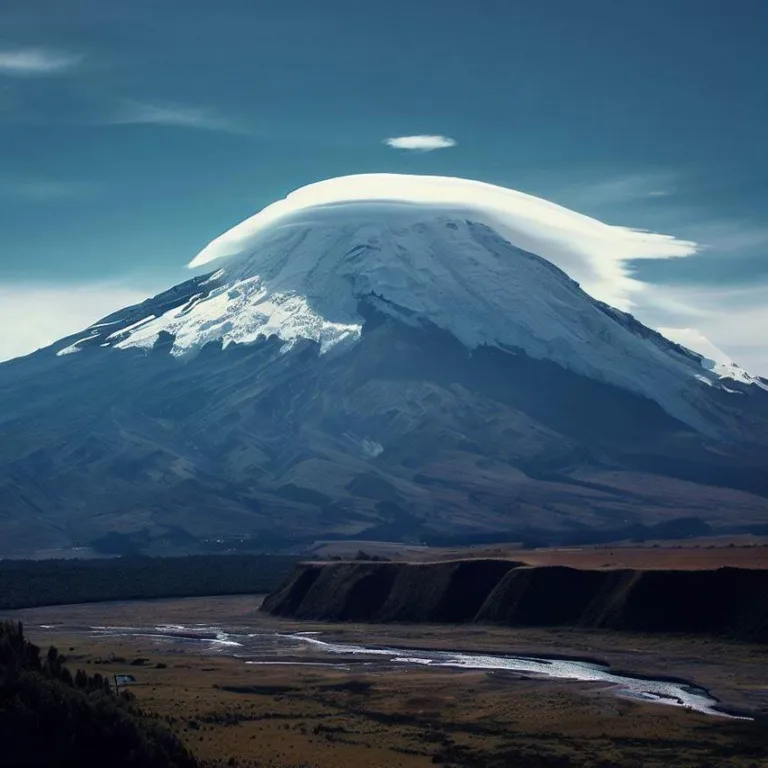Welcome to a journey of discovery as we delve into the breathtaking beauty and unique geographical significance of Chimborazo, the majestic mountain that stands as the crowning jewel of Ecuador’s Andes range. This awe-inspiring peak has captivated the hearts of adventurers, scientists, and nature enthusiasts for centuries, and its towering presence continues to leave a lasting impression on all who have the privilege of gazing upon it.
The geological marvel
Chimborazo, with its soaring elevation of approximately 6,268 meters (20,564 feet) above sea level, proudly claims the title of the highest mountain in Ecuador. However, its significance transcends mere height. Chimborazo is an inactive stratovolcano, a type of volcano composed of layers of solidified lava, ash, and volcanic rocks. Its imposing stature is the result of millions of years of geological processes, including tectonic activity and volcanic eruptions.
This mountain is part of the Andes mountain range, a chain that spans several South American countries and is known for its breathtaking landscapes and diverse ecosystems. Chimborazo’s location within this range contributes to its unique climate and vegetation, making it a hotspot of biodiversity and ecological importance.
A symbol of cultural and historical richness
For the indigenous people of Ecuador, Chimborazo holds immense cultural significance. It has been revered as a sacred site for generations, with local myths and legends woven around its peaks and valleys. The mountain’s name itself is derived from the ancient Inca language, Quichua, and carries meanings related to „snow“ and „water.“
During the colonial period, Chimborazo was a focal point for scientific exploration. European explorers and naturalists marveled at its elevation and conducted various studies to better understand its geology and ecosystem. This fascination laid the foundation for the mountain’s place in modern science and exploration.
Chimborazo’s glacial crown
One of the most mesmerizing aspects of Chimborazo is its snow-capped summit. The glaciers that adorn its peaks not only contribute to its breathtaking beauty but also play a vital role in maintaining the region’s water supply. These glaciers are part of the mountain’s complex ecosystem, supporting a wide range of flora and fauna that have adapted to the extreme conditions.
However, it’s important to note that Chimborazo’s glaciers have been experiencing the effects of climate change. Rising global temperatures have led to the gradual retreat of glaciers, impacting the delicate balance of the mountain’s ecosystem and posing challenges to local communities dependent on the water resources originating from these glaciers.
Adventure and exploration
Chimborazo has long been a magnet for adventurers and mountaineers seeking to conquer its summit. The ascent is not for the faint of heart, as it requires technical climbing skills and acclimatization to the high-altitude environment. Climbers are rewarded with breathtaking views and a sense of accomplishment that comes from conquering a peak of such monumental stature.
Aspiring climbers often embark on expeditions that take them through varying landscapes, from lush valleys to rocky slopes and icy expanses. The journey to the summit is both a physical and mental challenge, demanding determination, resilience, and respect for the mountain’s natural forces.
Frequently Asked Questions (FAQs)
What is the significance of Chimborazo’s glaciers?
Chimborazo’s glaciers are vital for the region’s water supply and ecosystem. They contribute to the flow of rivers and provide water to local communities and wildlife.
Are there any guided tours for exploring Chimborazo?
Yes, there are guided tours available for those who wish to explore Chimborazo’s lower slopes and learn about its geology, ecology, and cultural significance.
How can climate change impact Chimborazo’s ecosystem?
Climate change has led to the retreat of Chimborazo’s glaciers, affecting the delicate balance of its ecosystem. This can result in shifts in vegetation patterns, disruptions to water sources, and potential habitat loss for certain species.
What safety measures are important for climbing Chimborazo?
Climbers should prioritize acclimatization, proper gear, and physical fitness. It’s essential to be aware of weather conditions and follow the guidance of experienced guides to ensure a safe ascent.
Viz také:






